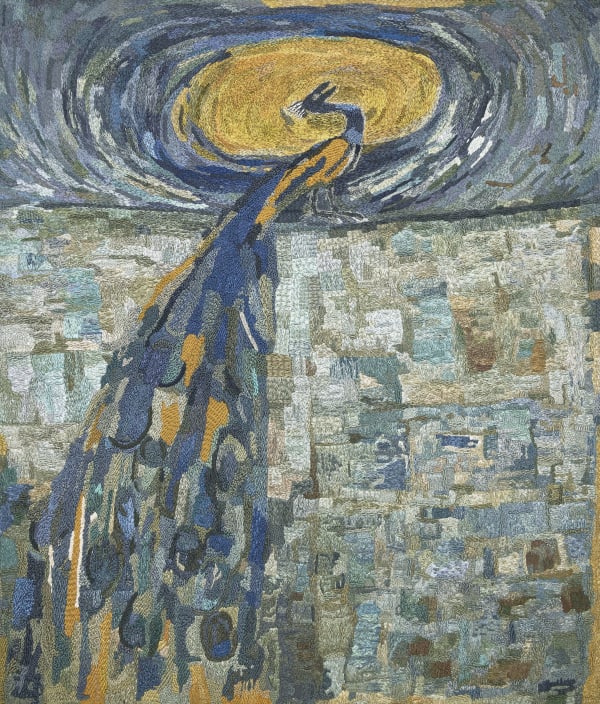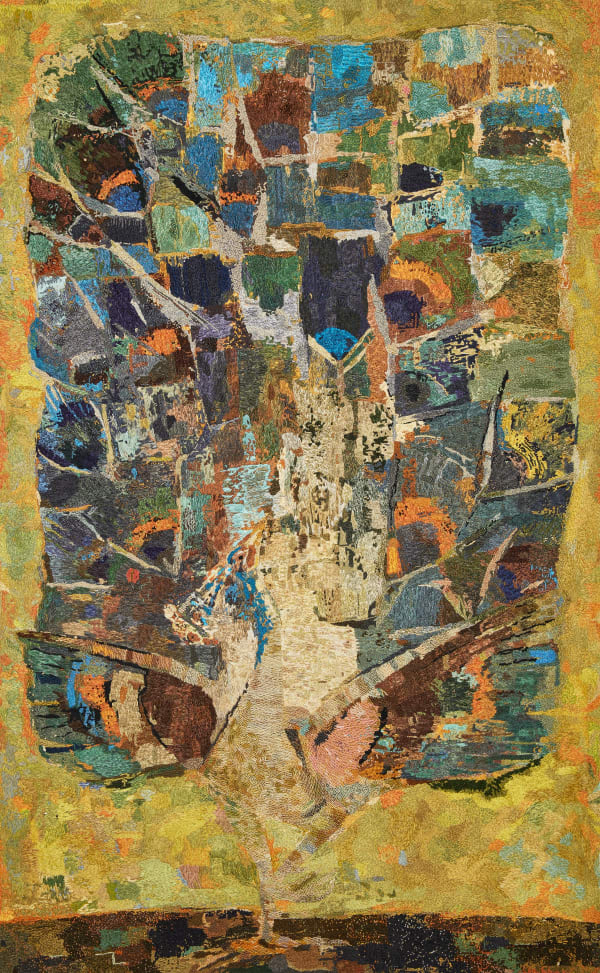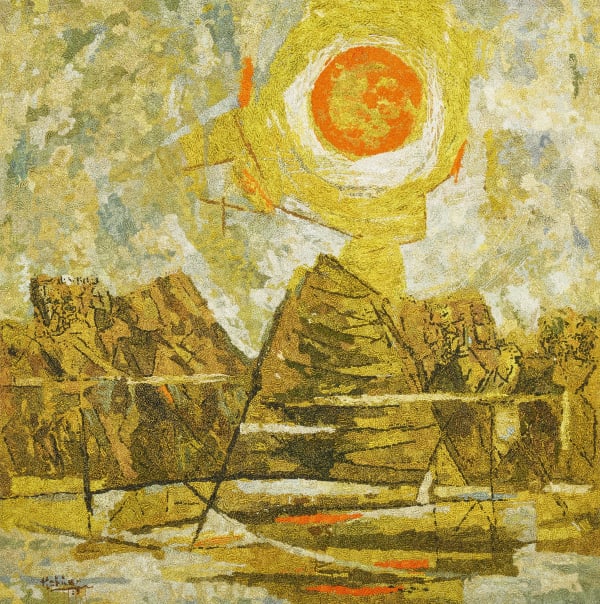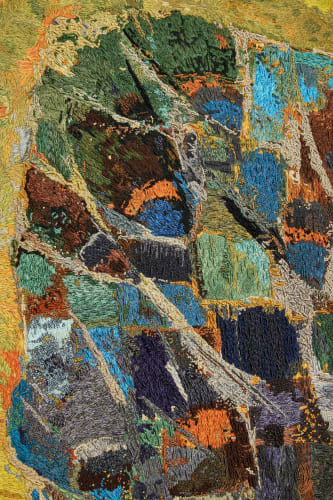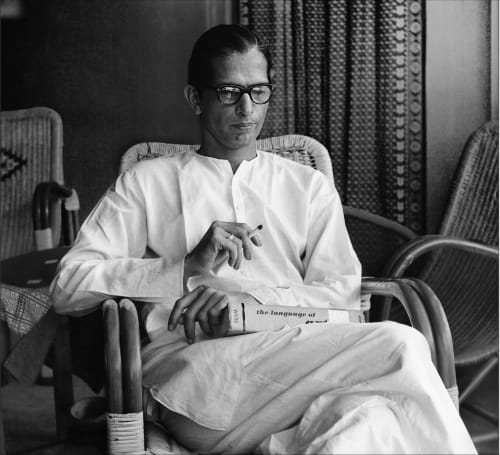"Every stroke of brush is impeccably matched with varied thread and bullion techniques, capturing the ethos of his work."
OVERVIEW
(1911 – 1996 KATTINGERI, KARNATAKA)
Kattingeri Krishna Hebbar demonstrated a keen sensitivity to nature as he captured the rhythm and balance of landscapes, flora, fauna, and birds. His work showcases a deep understanding of the symbiotic relationship between human communities and their natural surroundings. The natural elements in his paintings often serve as metaphors for various aspects of the human experience, reflecting the transitory nature of life.
Modernist Kattingeri Krishna (“K. K.”) Hebbar infused the aesthetic traditions of Indian folk art with Western abstraction and figuration. Simplistic line drawings depicting nude figures, such as Farmers (1977), are emblematic of Hebbar’s signature style. His works in oil on canvas showcase his broader talent as a landscape and figure painter. While his strong social consciousness compelled him to paint subjects stricken by poverty and hunger—as is evidenced by his Expressionist-influenced Hungry Soul (1952)—he also captured the grace and dynamism of traditional Indian dance performances. Hebbar was commissioned to produce a number of political portraits, especially during the Nehruvian era. Despite working during a period of upheaval in his native country, Hebbar became a highly influential Indian artist.

